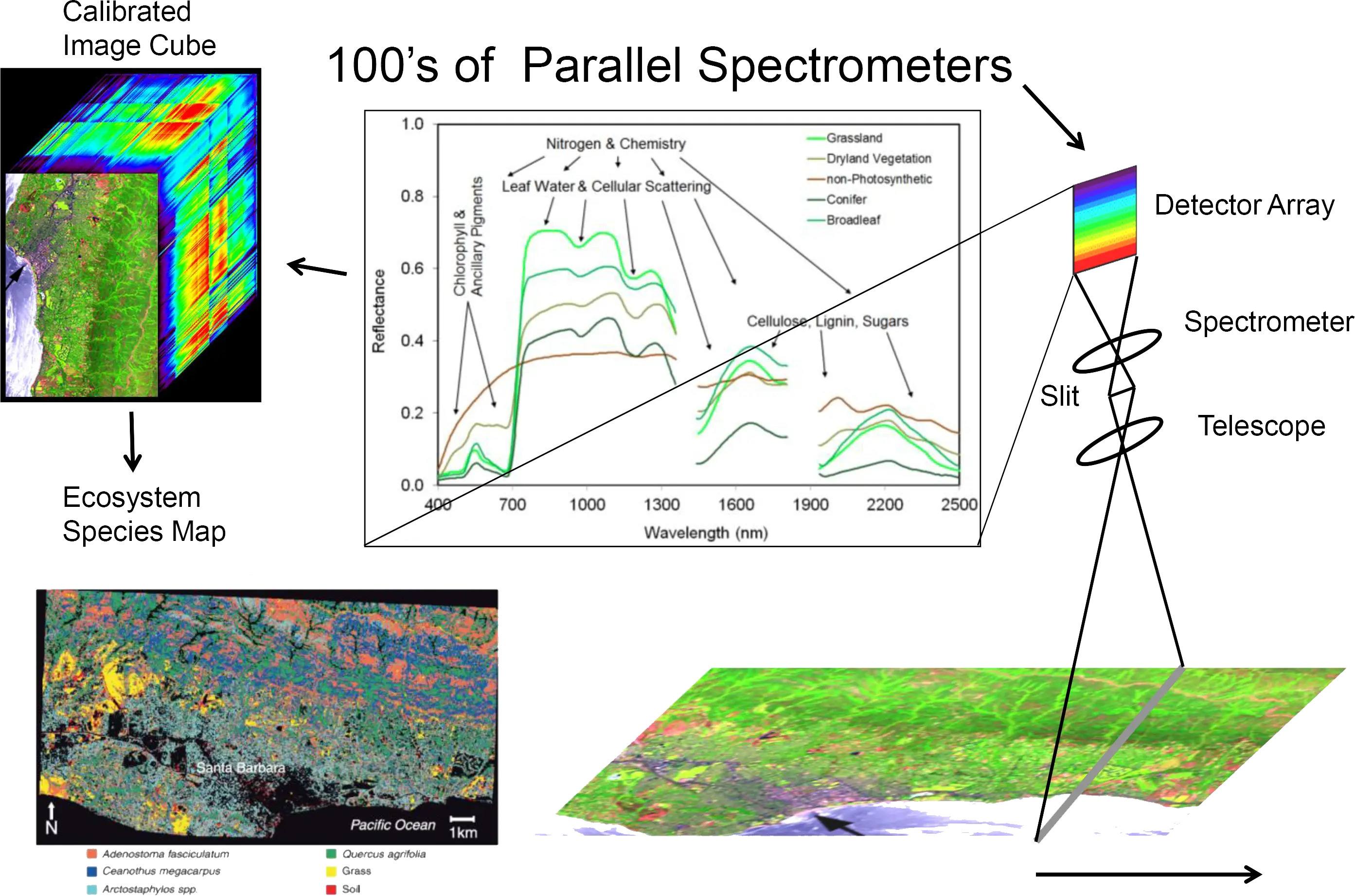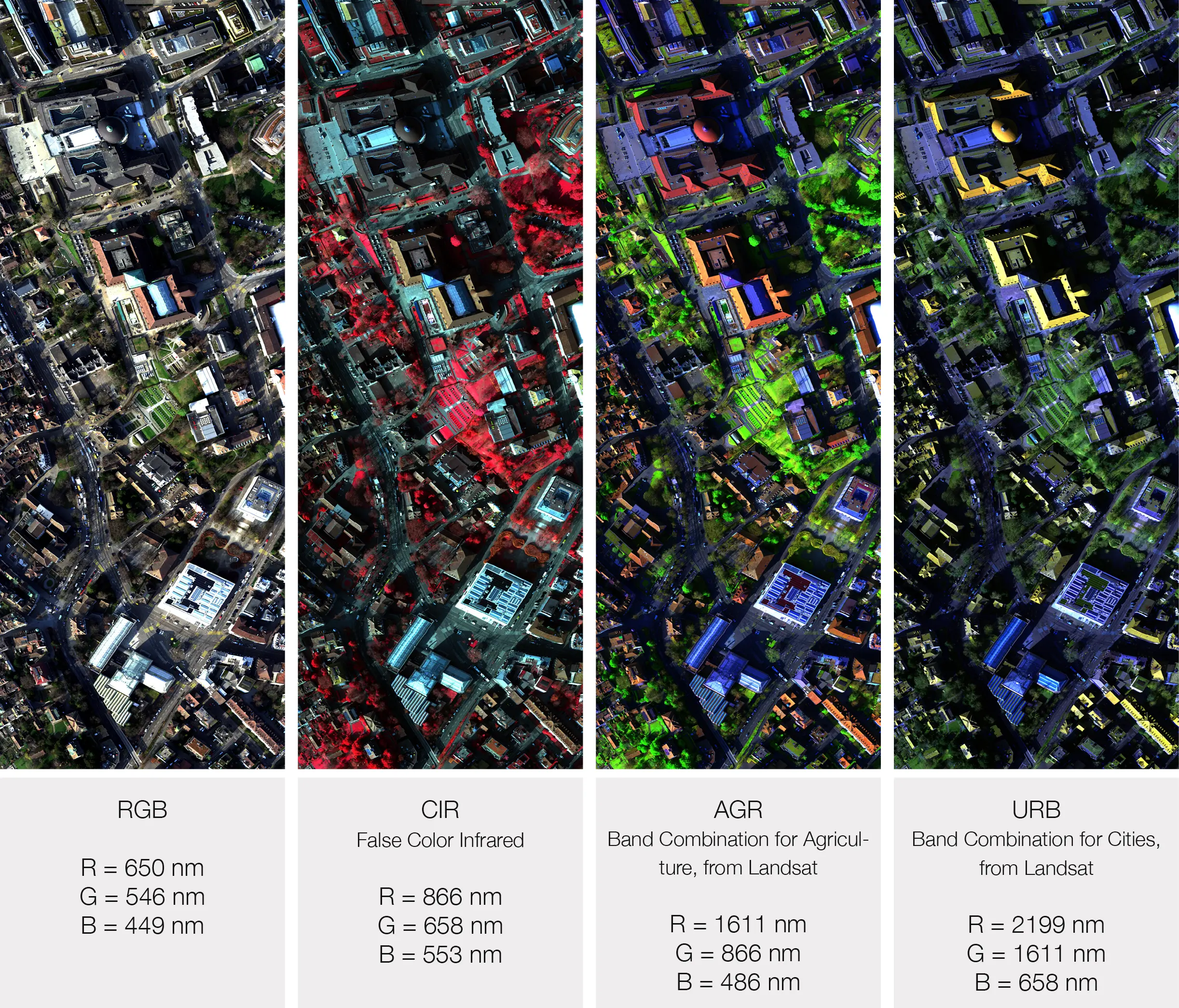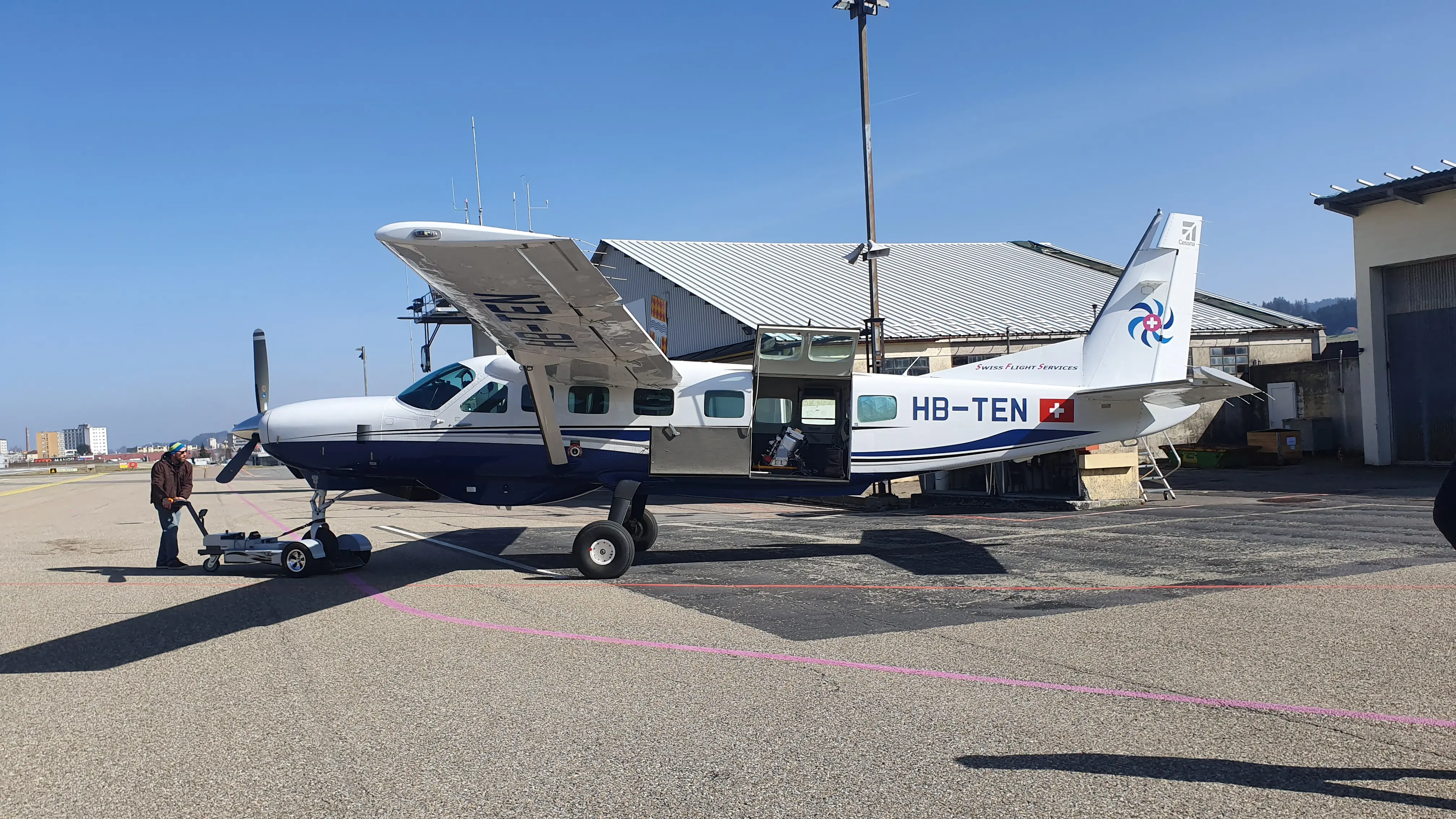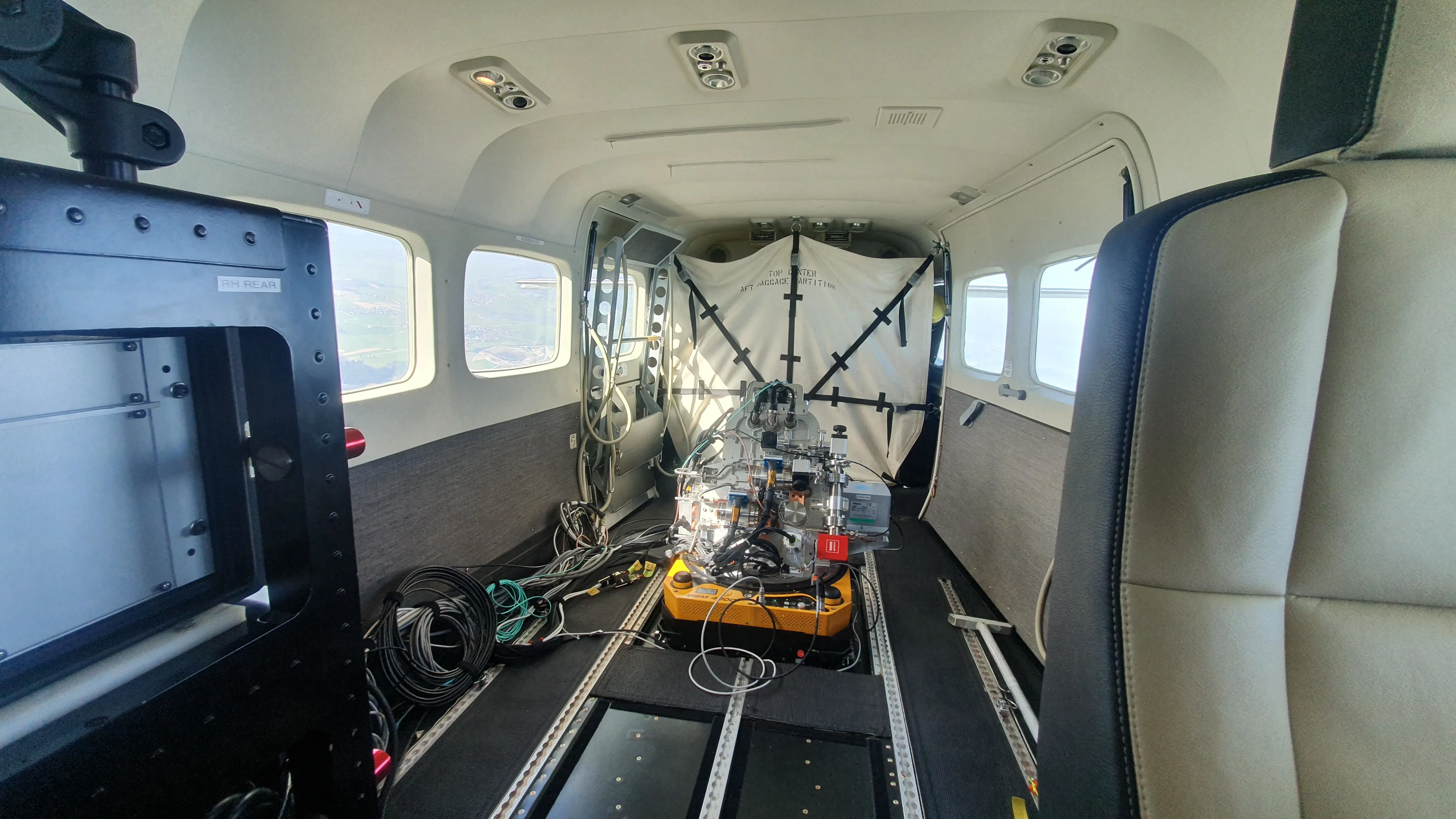AVIRIS-4 (a.k.a. CWIS-II): Compact Wide-Swath Imaging Spectrometer
In collaboration with UZH (Remote Sensing Laboratories, Dept. of Geography), EPFL and NASA/JPL, ISC is developing the data acquisition and control software for an advanced airborne imaging spectrometer and is responsible for the complete system integation
100’s of parallel spectrometers

Sunlight reflected from the Earth’s surface is imaged by a telescope and spectrometer system onto a two-dimensional detector array that is sensitive from the visible to short wavelength infrared portion of the electromagnetic spectrum.
Using the CWIS-II mounted in an aircraft, scanning images are captured for which the imaging spectrometer instrument measures a spectrum for every point.
Each column of the detector array records the spectrum for a sample of 1240 cross-track instrument swath. The along-track dimension of the image is built up with the forward motion of the airplane. The hyperspectral image cubes measured by the imaging spectrometer are calibrated to spectral radiance, then atmospherically corrected and analyzed to determine multiple properties of the imaged surface, e.g. the mineral composition or biological properties.
Technical Hand-Over at NASA/JPL, California
In May 2022, the technical hand-over of the CWIS-II Sensor Head built by NASA/JPL took place in Pasadena, California.

ISC’s contribution
A specialized software developed by ISC acquires the raw sensor data at >200 MB/s, processes it on-the-fly to get an appropriate visible image for live monitoring and safely stores it redundantly during the flight missions. Multiple auxiliary sensor values such as GPS/IMU, gimbal angles, temperature and pressure, are monitored and merged to the spectrometer data. A specialized software interface allows to connect to the airplane’s flight management system in order to automatically start and stop the data acquisition and instrument calibration.
Mounting the CWIS-II in an airplane requires multiple additional electronic devices e.g. a flexible and powerful UPS, a liquid chiller, a gimbal mount. ISC is responsible for the sensor head integration into a complete system which can be certified for airborne operation.


